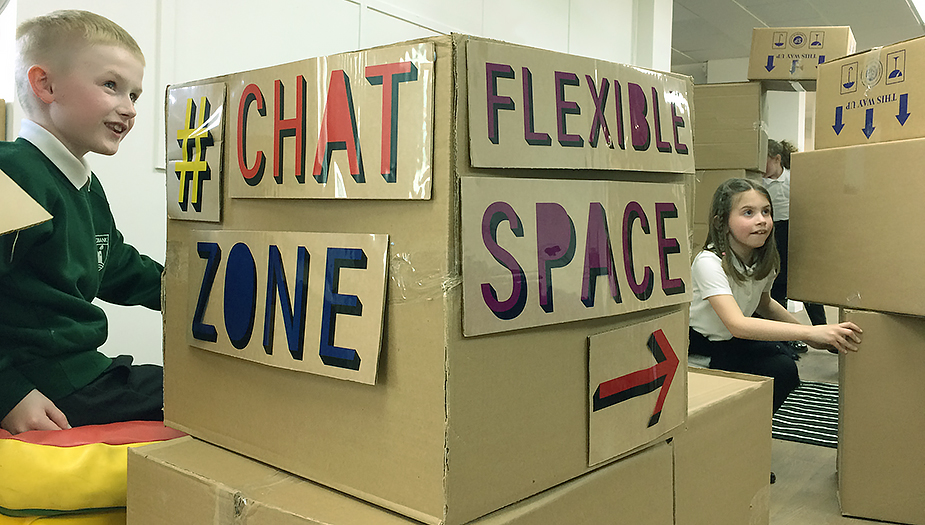Craigbank Primary School
How do learning spaces support children’s wellbeing?

Tests of Change
The following case study uses the Plan-Do-Study-Act approach from the Test of Change projects.
Tests of Change (ToC) is based on an action enquiry cycle – Plan, Do, Study, Act (PDSA). This 4-step process encourages learners and educators to be at the forefront of problem-solving and decision-making to drive change in their own learning environments.
Teachers and pupils work together to explore how transforming learning as identified through ToC goals and using design-principles tools can lead to enhancing the quality of learning in our schools.
Plan
When Craigbank Primary School was planning renovation works in 2017, it chose to co-create settings that focused on wellbeing. It saw this as a way to help children manage stress, feel safe and ready to learn.
An important part of the Readiness for Learning (R4L) programme is about placing children at the heart of designing learning spaces. Here they can shape them into places in which they feel comfortable and supported.
We helped Craigbank’s teachers and learners identify priorities for their school with a particular focus on wellbeing.
Do
Through a series of meetings, workshops and a space hack, teachers and learners identified a need for:
- a mobile library and quiet corner
- presentation and exhibition spaces
- a breaktime area and social area
- group work and storytelling spaces
- creative storage solutions where specialist resources are grouped centrally
By testing out different settings, three issues emerged:
- A need for a range of small-scale social spaces
- A need for cosy dens, nooks, personal spaces and quiet spaces
- Learners’ desire for a wider range of seating options – from sitting at desks to lying on mats

Study
Once the school’s renovations were complete, teachers started to see how redesigning the library “had completely transformed the way that literacy was looked at in the school”.
Re-designing the building changed the way it was used, transforming the school’s teaching practice.
Open plan spaces enabled teachers to fully engage in collaboration and share their skillset with other teachers and learners.

Act
Re-imagining the settings for wellbeing and learning helped teachers set up the R4L programme. The process led to a sense of collective ownership.
The new open-plan layout, created by the learners, is quieter and supports the learners’ voice and choice.
Overall, this project not only enabled teachers to engage in more collaboration and change their approach to teaching. It also enabled learners to engage in investigative work.
They looked for inspiration from recently designed learning spaces and then communicated renovation plans to the wider school community.
Experiences and Outcomes achieved through the Tests of Change process

Leadership of Learning, children and young people leading learning
HGIOS 1.2

‘Pupils took ownership of the project by organising a forum for parents to find out more about school developments’

Co-designing
HWB 0-10a / HWB 1-10a / HWB 2-10a / HWB 3-10a / HWB 4-10a

In contributing to the design of a variety of learning spaces that catered for different needs pupils contributed to making their school community one which values individuals equally and is a welcoming place for all.
How can the room we work in make a lesson better or more inspiring?
The spaces we work and learn in play a huge part in shaping our mental health, happiness, and ability to learn. Our Shared Learning toolkit will help guide you and your pupils step-by-step on a collaborative mission to find the answers.
